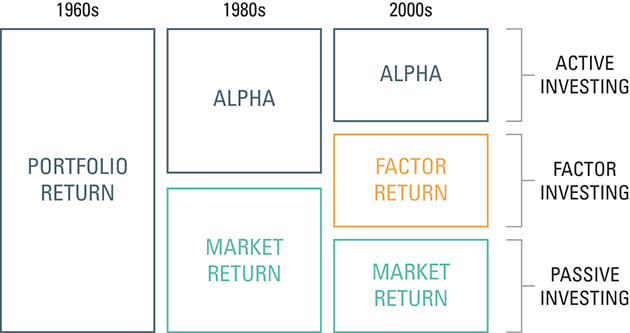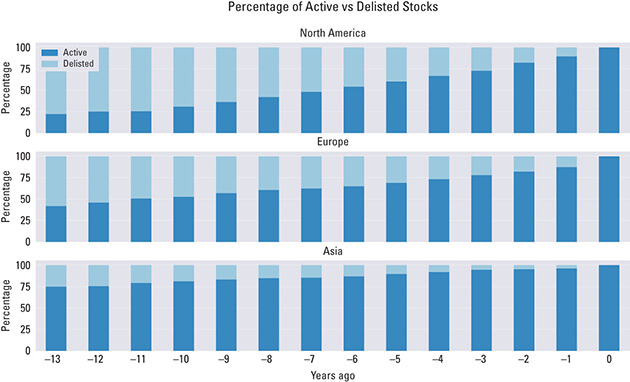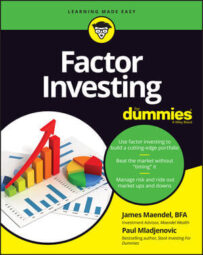You see, by isolating and identifying key characteristics that define outperforming investments, factor investing puts you on the same elevation as the professional money manager, giving access to a selection process once attributed to managers’ exclusive stock-picking prowess.
This holds out the promise of market-beating returns without having to pay high fund manager fees. The entire field of factor research has been a giant pain in the backside for overpriced money managers, even ones who have had market beating runs.
In previous decades, a successful fund manager was simply assumed to be performing due to his stock-picking expertise, and many assumed almost god-like status. Bookish academics have inadvertently undermined these market legends by demonstrating that, with very few exceptions, winning stocks shared key factors in common and these factors could be used in advance to pick a winning portfolio.
In fact: Currently, factor models can explain up to 95 percent of the differences between active managers, an attribute formerly ascribed mostly to manager skill. Factor investing offers the potential to achieve market beating returns without high manager fees, saving you money!
Factor investing put the exclusive tools of professional money managers at your fingertips, but to work, you need to use them efficiently and with discipline.
Factor-based (or smart beta) strategies are gaining popularity and market share, competing with index funds (passive returns), and traditional manager (active) returns, as shown in the figure below. ©John Wiley & Sons, Inc.
©John Wiley & Sons, Inc.Navigating the Factor Jungle
More than 300 factors have been discovered in recent years, but not all pass the feasibility test. Here’s how you define a good factor:- Did it outperform (make money!) in the past?
- Will it make money (net of costs) in the future?
- Why does it work? (The answer to why helps you answer whether it will make you money, and also whether the effect might be already duplicated by another factor that already contains the elements of another factor.)
What surprises new investors is what John Cochrane of the University of Chicago warned is becoming a zoo of factors. Factors are becoming so numerous and exotic that investors are confused by the sheer proliferation of discoveries (one hedge fund claims to use over 80 different factors in its stock pickings!)
Keep your strategy simple and focus on the proven factors, and the stocks, mutual funds, and exchange-traded funds (ETFs) that incorporate them.
Avoiding the Factor Zoo
So why are there so many factors to choose from?There are many reasons, but most of them break down to one of the following: A newly discovered factor works because of attributes that are already integral parts of an existing factor. Or, the factor is really a phantom result of poor statistical analysis and/or outdated or incomplete historical stock price databases.
Answering the three questions above helps you determine whether a factor includes the right attributes.
Avoiding supercomputer factors
Supercomputers crunching numbers can be both a blessing and a curse. The details are beyond the scope of this book, but if you're interested it's worth reading more of what professor Cochrane has written about this.In short, the dangers of data mining and selection bias can cause very smart people to come up with powerful factors that aren't very profitable:
- Data mining: The process of analyzing dense volumes of data to find patterns, discover trends, and gain insight into how that data can be used.
- Selection bias/survivorship bias: Caused by choosing non-random data for statistical analysis; for instance, back testing a factor's historical performance against the pool of all existing small capitalization stocks inadvertently eliminates just as many stocks that are no longer trading as they've gone bankrupt or merged.
Seems obvious in retrospect, but many factor discoveries have proven to be based on incomplete or biased databases.
 ©John Wiley & Sons, Inc.
©John Wiley & Sons, Inc.Computers are only as good as the data you feed them. A huge number of factors that seem to work on historical data models do not pan out in the real world for various reasons.
These factors are the product of powerful computers searching through enough data to find a situation where a new factor looks good by sheer accident and randomness. Of course, you want to avoid these factors because they don’t have the predictive power for the future and won’t bring you success in the future.
The risk of using a factor from the factor zoo isn’t just underperformance, but also the trading and management fees it costs you to carry it out. In addition, there's the opportunity cost to you had you done something more effective with your money!
Finding investable factors
Literally hundreds of factors have been discovered and analyzed in recent years (see the sidebar for some examples). Many of these factors work on paper, but to be useful for you in your investment strategy, factors need to clear a much higher bar.Some factors only work in certain decades, or with a specific sector of the stock market. If a factor can’t duplicate its outperformance in other decades and over long periods of time, it's not really investable.
An investable factor also needs to yield enough expected outperformance that it outearns the amounts you pay in costs, fees, and taxes:
- All portfolios, no matter how efficiently run, have trading and operating expenses, and all investments have a buy/ask spread, meaning that you lose a little money simply transacting a buy or sell when it's needed to follow the rules of any particular factor.
- Unless you’re holding your portfolio in a tax-sheltered account such as an IRA or a 401(k) (many now offer the ability to trade individual funds and stocks), there are potential tax costs for executing any strategy.
You especially need to account for taxes if you’re using a high turnover factor strategy where gains are likely to be taxed at the less favorable short-term capital gains tax rate than the more favorable long-term capital gains rate.
When we distill these ingredients to their essentials, some basic rules emerge. These three things make a factor attractive:- Doggedness: The factor must show up through different time periods and not just one random decade or period. No one-trick ponies here. You want factors that persist for any investing period, given enough time.
- Prevalence: The factor must demonstrate an advantage with various different countries and market sectors.
- Investability (actionable): The factor must be able to be deployed cost effectively (costs include trading fees, taxes, and potentially time/research efficiency for more esoteric factors).
- Improved absolute returns (more gains!)
- Improved risk-adjusted returns (gains with less risk and a smoother ride than other approaches!)
- Extended periods of outperformance followed by droughts (long periods of underperformance relative to whatever cap-weighted index you’re trying to beat)
Even the best factors experience periods when they underperform the market, and these are hard to predict. You need patience to let a factor work for you. You need to stay in it to win it! The key is, of course, to diversify factors in your portfolio.

